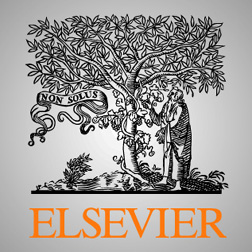دانلود رایگان ترجمه مقاله افشای مطلوب و مبارزه برای توجه – ۲۰۱۷
دانلود رایگان مقاله انگلیسی افشای بهینه و تلاش برای جلب توجه به همراه ترجمه فارسی
| عنوان فارسی مقاله | افشای بهینه و تلاش برای جلب توجه |
| عنوان انگلیسی مقاله | Optimal Disclosure and Fight for Attention |
| رشته های مرتبط | مدیریت و حسابداری، حسابداری مالی، مدیریت مالی و مدیریت اجرایی |
| کلمات کلیدی | تخصیص توجه، سرمایه گذاری شرکت، افشا، هزینه سرمایه، پاداش مدیریتی |
| فرمت مقالات رایگان |
مقالات انگلیسی و ترجمه های فارسی رایگان با فرمت PDF آماده دانلود رایگان میباشند همچنین ترجمه مقاله با فرمت ورد نیز قابل خریداری و دانلود میباشد |
| کیفیت ترجمه | کیفیت ترجمه این مقاله متوسط میباشد |
| سال انتشار | ۲۰۱۷ |
| کد محصول | F587 |
|
مقاله انگلیسی رایگان (PDF) |
دانلود رایگان مقاله انگلیسی |
|
ترجمه فارسی رایگان (PDF) |
دانلود رایگان ترجمه مقاله |
|
خرید ترجمه با فرمت ورد |
خرید ترجمه مقاله با فرمت ورد |
| جستجوی ترجمه مقالات | جستجوی ترجمه مقالات |
|
فهرست مقاله: چکیده مقدمه مدل پایه شرایط مطالعه مجموعه های اطلاعاتی ر اه حل تعادل بازار مالی و سرمایه گذاری تعادل مبارزه بر ای جلب توجه از طریق افشای بهینه هزینه سرمایه و کار ایی قیمت محرک های مدیریتی نتیجه گیری |
|
بخشی از ترجمه فارسی مقاله: ۱-مقدمه |
|
بخشی از مقاله انگلیسی: ۱ Introduction In reality, financial market participants are overwhelmed with information like data releases, earnings reports or public announcements. Clearly, a rational trader with unlimited resources would like to thoroughly read and process all of this information to make the optimal trading decision. However, in actual markets even professional traders face capacity constraints. They have to decide how to allocate their limited time (or resources) between different tasks, firms or sectors. A natural question to ask in such a world of limited attention capacity is: how can firms influence the decision of market participants to follow their firm and when is this fight for attention optimal? In this paper, I focus on one major firm decision, its disclosure policy and show that (and how) it can be used to attract speculators’ limited attention. How firms should structure their disclosure policy is clearly an important question. First, there is a substantial policy debate about disclosure regulations or mandatory disclosure. Second, the existing literature has highlighted several costs and benefits associated with firm disclosure (see e.g. Leuz and Wysocki (2016) and Kanodia and Sapra (2016)). At the same time, there is ample evidence that investors regularly shift attention from one firm (or industry) to the other (see e.g. Barber and Odean (2008) and Da et al. (2011)).1 Nevertheless, we still know very little about the way in which firms can actively control (or influence) this reallocation of attention. This paper shows theoretically that a firm’s disclosure policy is a powerful tool to “fight for attention,” a mechanism that has received recent support from the empirical literature (see e.g. Cunat and Groen-Xu (2016) and Edmans et al. (2017)). In this paper, I theoretically study the economic consequences of corporate disclosure decisions in the presence of speculators who optimally allocate their attention between firms. I show that managers can increase the attractiveness of their firm by choosing not to disclose information to the financial market. In a setup with multiple firms, managers therefore perform a “race to the bottom” such that in equilibrium all firms choose to withhold their information. I discuss the consequences for the informational content of prices, cost of capital, and economic efficiency. The model features two firms that are run by benevolent managers who are in charge of two decisions: disclosure and capital investment. The return on the firms’ assets in place are traded in a financial market by a continuum of informed traders (“speculators”). These speculators can acquire private information about the firms’ fundamentals depending on the amount of attention allocated to each firm. Thus, speculators’ attention should be interpreted as time or effort allocated to research or analysis of a certain firm. More extensive research leads to a more precise signal that allows the speculator to invest more efficiently. The model has four periods. In t 1, the firm managers decide whether to disclose their private signal about the fundamental to the financial market participants. In t 2, speculators choose how to allocate their scarce attention between the two firms. This decision determines the precision of their private signals about the firm fundamentals. In t 3, the endogenously informed speculators trade the two risky assets and the two equilibrium prices are determined. Due to noisy supply, the two prices are imperfect signals of the true fundamentals. In t 4, the firm managers decide on their investment in a growth opportunity. Since the return on this investment is correlated with the return on the assets in place, the managers partially base their investment decision on the equilibrium asset price which creates a “feedback effect” from the financial market to firm decisions. In equilibrium, each firm’s asset price depends on the fundamental, which is revealed through the speculators’ aggregate private signal. However, due to the noisy supply shock, asset prices are only imperfect signals about the true fundamental. If the managers chose to disclose their information, the asset prices are also affected by the disclosed signal which serves as a public signal for all speculators. As a result, both firm managers can extract additional information from the asset prices to improve their knowledge about the firm’s fundamental shock. This additional price signal then allows the managers to invest more efficiently which increases both firm’s ex ante value. A crucial feature of the model is the speculators’ endogenous choice of the signal precisions. As in Kacperczyk et al. (2016), each speculator decides on the optimal split of attention between the two firms. The speculators’ aggregate attention choice then determines the informational content of the equilibrium asset prices in the following period which, in turn, affects investment efficiency in the last period. An important difference to the setup in Kacperczyk et al. (2016) is that the speculators’ attention allocation decision is a function of the firm managers’ disclosure decision in the previous period. Thus, the two managers can actively control the speculators’ signal precisions and thus the informational content of their firm’s price. In particular, the managers have an incentive to maximize the amount of outside information in the price because this allows them to extract as much information as possible in order to invest optimally in the growth opportunity. Section 3 discusses the disclosure equilibrium in the baseline model. Driven by the incentive to fight for the speculators’ scarce attention, the two firm managers compete in a “race to the bottom” and choose not to disclose their private information. To understand the intuition behind this result, consider the counterfactual outcome of full disclosure by both firms. In this case, speculators would be indifferent between both firms and allocate 50% of their attention capacity to each firm. However, this outcome is not stable as both firms have an incentive to deviate and choose not to disclose. By doing so, each firm can attract the speculators’ entire attention because their firm is now the more attractive target. As a result, the firm’s asset price becomes more informative and the firm manager can increase investment efficiency. Thus, in equilibrium both firms choose not to disclose. Furthermore, I show that this fight for attention has important (and novel) consequences for the firms’ cost of capital and price efficiency. Each firm’s cost of capital is proportional to the speculators’ conditional payoff variance. Interestingly, this variance is affected by the firms’ disclosure policy through two different channels. First, if a firm chooses to disclose, this decision provides the speculators with an additional public signal about the payoff and reduces their payoff uncertainty. Second, if a firm chooses to disclose, this renders the firm a less attractive target for speculators such that their average precision about the firm’s fundamental decreases. As a result, the firm’s asset price becomes less informative. Taken together, this second (indirect) channel increases the conditional variance and thus the firm’s cost of capital. Therefore, this analysis leads to the surprising result that disclosure does not necessarily reduce a firm’s cost of capital. The net effect crucially depends on the disclosure decisions of the firm’s competitor and the impact on the speculators attention allocation decision. The informational content of the firms’ asset price, however, is identical in the two symmetric outcomes of full disclosure and non-disclosure. Intuitively, this efficiency measure only depends on the amount of attention allocated to each firm and in any symmetric outcome, this capacity is split equally between both firms. As a consequence, the model highlights the delicate difference between the total amount of price information (reflected in the firm’s cost of capital) and the amount of novel (or outside) information (reflected in the firm’s investment efficiency). Next, I analyze the impact of managerial incentives on the firms’ optimal disclosure decisions. In particular, I assume that both managers’ compensation contract includes a long-run component (as before) and a short-run component that rewards the manager for increases in the firm’s (shortrun) asset price. I show that the managers’ objective functions under this contract can be written as a weighted average of the manager’s and the speculators’ conditional payoff variance. Interestingly, the second variance captures the impact of non-disclosure on the firm’s cost of capital. As a result, by increasing the managers’ myopic preferences over a fixed threshold, both managers can be incentivized to disclose their private information in equilibrium. As a byproduct, an increase in myopic preferences also reduces the speculators’ payoff uncertainty and the cost of capital. In Section 4, I study an extension of the baseline model and endogenize the scale of the firms’ assets in place. In particular, I allow the firms to chose this scale (Xj) depending on the firms’ expected cost of capital. As a result, the two firms grow in expectation of decreasing capital cost and vice versa. This extension is useful because it highlights a potential inefficiency associated with the no-disclosure equilibrium. If a higher cost of capital translates into less installed capital, the non-disclosure equilibrium might be inefficient ex ante. Intuitively, the firm managers might not be able to commit to full-disclosure if the issuance decisions is made a priori. As a consequence, the speculators’ payoff uncertainty (and so the firms’ cost of capital) remains inefficiently high which leads to a decrease in the scale of the firms’ assets in place (and their ex ante value). As a straightforward implication, it follows that both firms can be made better off under mandatory disclosure. Intuitively, the informational content of the asset prices remains the same, but the firms’ cost of capital decreases which raises the scale of the firms’ assets in place. Moreover, the analysis in Section 3 shows that myopic incentives for the two managers can implement the full disclosure equilibrium. Therefore, the extended model implies that it is efficient to give both managers sufficiently strong myopic incentives, e.g. through rewards for increases in the short-run asset price. This paper is related to three literatures. First, the accounting (and finance) literature on the real effects of disclosing accounting information (reviewed in Kanodia (2007)). Second, the finance literature on the real effects of financial markets (reviewed in Bond et al. (2012)). Third, the economics literature on limited attention and endogenous information acquisition (reviewed in Veldkamp (2011)). There is a substantial literature in accounting and finance on the real effects of disclosing information. Recent contributions are Gao (2008), Gao (2010) and Cheynel (2013). These papers study the impact of corporate disclosure on the firm’s cost of capital and price efficiency. One main difference with respect to this literature is the assumption that financial markets have spillover (“feedback”) effects to the real economy. This feedback effect is modeled through the informational role of the two asset prices, as e.g. in Subrahmanyam and Titman (1999) and Goldstein et al. (2013). Other papers in the feedback literature that discuss firms’ optimal disclosure are Goldstein and Yang (2015), Kurlat and Veldkamp (2015) and Edmans et al. (2016). Gao and Liang (2013) also discuss a feedback model with optimal disclosure. In their paper, disclosure crowds out private information production, reduces price informativeness and harms managerial learning. Thus, my results are complementary to their findings because in my paper information disclosure affects price efficiency through a different channel, namely the speculators’ attention allocation problem. I model the speculators’ attention allocation decisions as in Kacperczyk et al. (2016) or van Nieuwerburgh and Veldkamp (2010) and add an initial stage in which firm managers optimally choose how much information to disclose to the financial market. Importantly, this disclosure decision is highly entangled with the speculators attention allocation problem because more disclosure reduces the learning score (i.e. the firm’s “attractiveness”) and vice versa. Closely related is an early paper by Fishman and Hagerty (1989). Their paper assumes that it is costly for traders to process the disclosed information. Therefore, firms compete for traders’ attention over the disclosed signal because traders have to choose which signal to pay attention to. Even though this mechanism might look similar to the one in my paper, it is quite different. In my paper, the disclosed public signal does not require any attention from the speculators. It does, however, have an important impact on the speculators’ information acquisition decision regarding their private information. In particular, in my model the lack of disclosure is a useful tool to render a firm a more “attractive” target for speculators. As a result, the equilibrium in the two models are also fundamentally different. While in Fishman and Hagerty (1989), both firms have an incentive to disclose in equilibrium, I show that under limited attention withholding information (or disclosing as little information as possible) is the natural equilibrium outcome. Overall, the main contribution of this paper is to study equilibrium (and efficient) disclosure in a setting with feedback effects and limited attention. In particular, I show that these two additional features have important implications for the disclosure equilibrium and the efficient allocation. Moreover, they also change the real effects of disclosure more generally and highlight novel advantages of myopic incentives in managerial contracts. For instance, I show that under certain conditions the efficient contract includes a myopic component that makes sure that the firm manager chooses to disclose. Furthermore, I derive novel implications for the relationship between disclosure and the firm’s cost of capital by showing that disclosure might reduce this cost if it is accompanied by a loss in attention. The remainder of this paper is organized as follows: Section 2 describes the basic model. Section 3 solves for the firms’ optimal disclosure decisions in equilibrium and shows the implications for cost of capital and price efficiency. Section 4 studies an extended model with endogenously determined assets in place and Section 5 concludes. |


